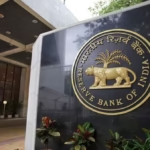The Indian fintech space is evolving at lightning speed, and right at the center of this digital finance evolution is Buy Now, Pay Later — popularly known as BNPL. It had its heyday in 2021-22, took a minor tumble due to regulatory tightening, and now, in 2025, it’s roaring back with a vengeance. But is this comeback a cause for celebration or concern? Behind the shiny interface and ease-of-use lies a ticking credit score time bomb that could explode at any moment.
🔹 The Return of BNPL: A New-Age Credit Revival
BNPL is essentially the Gen Z and millennial alternative to credit cards — offering microcredit at checkout, often with zero interest and minimal documentation. It’s fast, convenient, and embedded directly into e-commerce platforms. Post-pandemic, India saw a surge in BNPL usage, with companies like LazyPay, Simpl, and ZestMoney capturing the market.
But after RBI stepped in with stricter digital lending guidelines in 2022-23, many players were forced to tweak their models. Now in 2025, the resurgence of BNPL is being led by more compliant, RBI-registered NBFC partners, backed by data analytics, embedded credit scoring, and AI-driven underwriting.
The market size is booming again — estimated to surpass ₹80,000 crore in transaction value this year alone. It’s not just Flipkart and Amazon; now even offline retailers, D2C brands, and ed-tech players are integrating BNPL as a default checkout option.
🔹 Why Consumers Love BNPL
🔸 No Interest, No Hassle: For many, BNPL is seen as an interest-free credit option when repaid on time — unlike credit cards that often carry 30-40% APR if you miss a due date.
🔸 Frictionless Checkout: It eliminates the need to type card details or go through loan applications. A click and it’s done.
🔸 Low Entry Barriers: Young adults without a credit history can access BNPL much faster than getting a credit card.
🔸 Flexibility Over Salary: For salaried individuals with mid-month cash crunches, splitting payments over 2–4 installments is a blessing.
BNPL is winning the convenience war, especially with the under-30 crowd. But convenience can often come at the cost of control.
🔹 The Credit Score Time Bomb: What We’re Not Talking About
Behind BNPL’s smooth exterior lies a huge consumer finance risk — unreported and untracked debt piling up silently.
🔸 Most Users Don’t Realize It’s Credit: Many Gen Z consumers don’t even realize they’re taking a loan. They view it as a checkout convenience. So, when they default, they’re shocked to find it tanked their credit score.
🔸 Multiple Loans, One Person: Using BNPL across platforms can lead to overlapping liabilities. Someone might owe ₹2,000 to ZestMoney, ₹1,500 to Simpl, ₹3,000 to Flipkart Pay Later — but since these are all micro amounts, they slip under the radar.
🔸 No Centralized Reporting (Until Recently): Earlier, many BNPL loans weren’t reported to credit bureaus. This is changing now due to RBI mandates, but there’s still a lag in full transparency.
🔸 Defaults Have Long-Term Impact: Missed repayments, even for small amounts like ₹500, can ruin a person’s credit history for 5–7 years. This affects future eligibility for home loans, car loans, or even job background checks.
🔹 RBI’s Intervention: Protecting Consumers (Sort Of)
The Reserve Bank of India, recognizing the risks, has imposed multiple guardrails:
🔸 Only Regulated Entities Can Lend: BNPL companies now need to partner with RBI-licensed NBFCs or banks. Fly-by-night apps are being weeded out.
🔸 All Loans Must Be Reported: Credit bureaus must now be notified of all BNPL credit extended.
🔸 Clear Terms & Transparency: Borrowers must be shown APRs, repayment terms, and late fees upfront.
While these measures are well-intentioned, enforcement is uneven. Many startups still market BNPL as a zero-interest service without clearly stating the consequences of default.
🔹 Gen Z’s Financial Illiteracy is Fueling the Fire
Here’s the brutal truth: Most young users diving into BNPL don’t know the ABCs of personal finance. They aren’t budgeting. They’re spending emotionally. And they think small debts don’t matter.
🔸 Peer Pressure & FOMO: Social media-fueled consumerism means teens want the latest phones, fashion, and gadgets — and BNPL makes that instantly possible.
🔸 Low Repayment Discipline: With no EMI alerts or repayment coaching, defaults are common. Even auto-debits bounce if the user forgets to maintain balance.
🔸 No Incentive to Learn: There’s no adult supervision or school-level financial education system teaching the risks of overleveraging.
🔹 Is the BNPL Model Itself Flawed?
Not entirely. In fact, when used responsibly, BNPL can be a smart credit-building tool for young adults. But:
🔸 The credit limits are often misaligned with the user’s income.
🔸 Repayment cycles are tight — 15 days or monthly, which doesn’t always align with salary dates.
🔸 Lack of physical touchpoints or human advisors makes it easy to ignore red flags.
The business model relies on consumer psychology: the illusion of affordability. ₹10,000 doesn’t feel like ₹10,000 when paid in four easy installments.
🔹 The Way Forward: How to Avoid the Time Bomb
To prevent a credit crisis:
🔸 Financial Literacy Campaigns: Schools and colleges need to include credit management education. Government + fintech platforms must collaborate on awareness.
🔸 Smarter BNPL Design: Introduce spending caps based on income, AI-driven repayment reminders, and reward timely payers with better credit terms.
🔸 Integration with Credit Building Tools: Make users aware that BNPL impacts their credit scores, and offer dashboards to track scores and payment history in real-time.
🔸 Regulatory Pressure: RBI must keep tightening norms and enforce uniform credit bureau reporting. All fintechs should be held accountable.
Conclusion: A Double-Edged Sword That Must Be Handled with Care
BNPL’s comeback is not the problem. The lack of awareness, misuse, and underregulation is. If used smartly, BNPL can democratize credit for India’s young population. But if abused or misunderstood, it can destroy financial futures before they even begin.
The solution isn’t to kill BNPL — but to tame it. It’s time to stop treating it as a payment tool and start respecting it as what it really is: a loan with strings attached.




